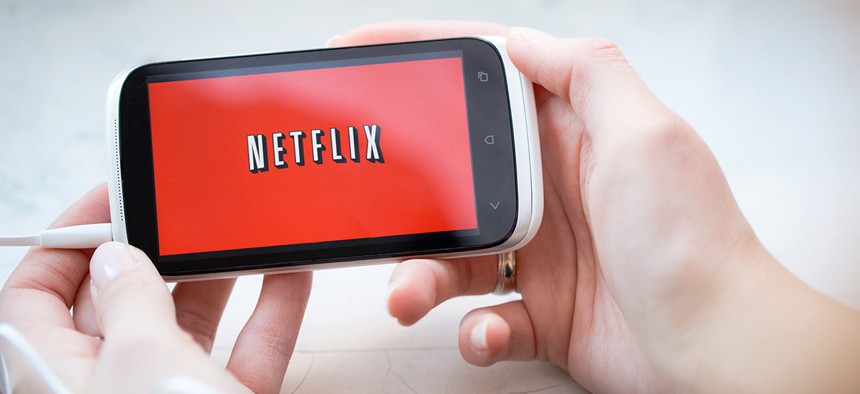Netflix Has Been Secretly Slowing Down Videos on Mobile

scyther5/Shutterstock.com
This may come as a shock, but your beloved Netflix is responsible for your slow streams on mobile, not your loathsome wireless carrier.
This may come as a shock, but your beloved Netflix is responsible for your slow streams on mobile, not your loathsome wireless carrier.
The streaming service revealedMarch 24 that it caps video speeds on mobile networks around the world, and has been doing so for the last five years (paywall).
Typically, Netflix recommends viewers use a connection that’s at least six times as fast as the 500 Kbps needed to play a movie or TV show on the platform. But when streaming through a mobile network, the default speed in 600 Kbps, the company said.
Netflix said it does this to “protect” customers from burning through their data plans and getting slammed with overage fees. That cap only applies to streaming on mobile networks, so mobile viewers who are connected to Wifi should experience normal speeds.
Quartz reached out to Netflix to confirm and will update this story as needed.
But really, it’s protecting itself. Streaming video uses a lot of data. And when people have data or connectivity issues, they blame whatever company they’re paying most for the service, according to industry experts. In the case of viewing Netflix through a mobile phone, wireless providers like AT&T and Verizon would bare the brunt of the blame. But unless the customer is willing to pay more to boost their data allowance or switch providers, there’s not a whole lot that can be done.
Those looking to get their data consumption under control will then set their sights on Netflix, and limit how much they stream on mobile, which is precisely what the company does not want. Half of Netflix’s millennial viewers in the U.S. watch on mobile.
Netflix’s move shouldn’t be all that surprising. The company has been experimenting with ways to keep subscribers from blowing past data caps for a while.
To save bandwidth, most streaming services use something called “adaptive bitrate streaming,” which is pretty standard in the video world. Ever watch a clip on YouTube and notice that the frame freezes or blurs when you walk into another room or go outside? That happens because YouTube is automatically adjusting the quality and speed, or bitrate, of the video to your new connection.
The bitrate normally adapts to the device and connection a video is being streamed through. But Netflix adjusts speeds based on content. If you’re watching "My Little Pony," for example, you probably don’t need the same speed and quality as you do for "House of Cards."
With Netflix thinking along these lines, the speed caps aren’t a huge stretch.
What’s less clear is why Netflix, a supposed champion for net neutrality, hadn’t previously disclosed the caps. T-Mobile forced the issue last week when CEO John Legere said AT&T and Verizon wireless customers received lower-quality Netflix streams than its own customers. (The “un-carrier” doesn’t count streaming against data plans if customers use lower-resolution streams, at a bandwidth of 480p, through its Binge On service.)
AT&T and Verizon denied throttling the service, leaving Netflix to step up. Had T-Mobile not blown up the issue, who knows when Netflix would have told customers.
The streaming service has since vowed to give users back some control over their data usage. In May, it will roll out a “data saver” feature that allows subscribers to “stream more video under a smaller data plan, or increase their video quality if they have a higher data plan,” Netflix said in its blog post Thursday.


